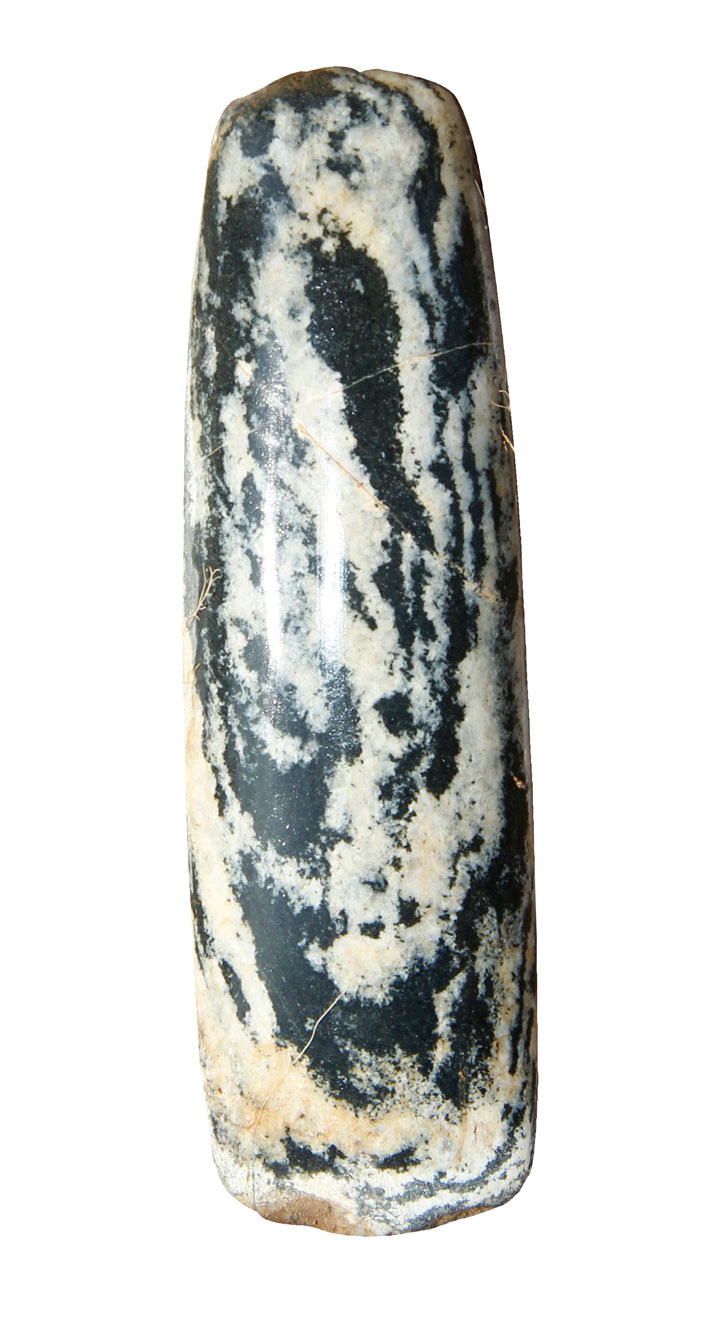More incredible still is that enough men could be spared for its construction (as they had been for the two mammoth stone circles nearby). “The scale of the structures tells us that it was a society that could mobilize lots of people and provide for them by creating surpluses,” says Card. Despite living in a seemingly remote place, this thriving population of linked communities appears to have been Stone Age movers and shakers. They came up with new ideas, designs, beliefs, and ways of doing things that spread far and wide across Britain. The Ness of Brodgar ceremonial complex, including the Ring of Brodgar and Standing Stones of Stenness, is a fine example of a new social and cultural trend, with the Ness predating England’s most famous stone circle and ceremonial complex at Stonehenge by at least a couple of hundred years. Meanwhile, Neolithic Grooved Ware–style pottery is also thought to have had its origins in Orkney before spreading across Britain and Ireland. And inside their buildings the Neolithic people of Orkney started a colorful trend, decorating sections of their walls with red, black, and white paints.
A beautifully polished stone ax is among many exceptional objects recovered from inside ceremonial
buildings at the Ness of Brodgar. Its workmanship and location suggest some sort of ritual purpose.
The design of the cathedral may have been on the cutting edge of Neolithic Britain, but it didn’t stay the same for long. By around 2400 B.C., the original inner chamber was remodeled, and a cross-shaped chamber, 21 feet across, was put in its place, incorporating colorful local red and yellow sandstone. Strangely, though, the masonry wasn’t up to previous standards, making the walls a bit uneven. “It is a bit perplexing, as this secondary phase is a bit of a ‘cowboy’ build,” says Card. The inconsistency in the walls might be due to subsidence into earlier underlying structures, and the remodeling may have been an attempt to shore the walls up. “Throughout the period, the buildings reflect a gradual rise and centralization of power, and the rise of an elite culminating in a truly hierarchical society by the time of Structure 10,” explains Card.
So what did these “elite” people do in the cathedral? Inside each of the recesses of the central chamber, Card and his team have uncovered stone shelves (locally known as “dressers,” and also found in high-status buildings at a number of other Neolithic sites), which may have functioned like altars. In the center of the chamber was a hearth with a cow skull placed upside down in the middle. And like the earlier buildings with piers and alcoves, a number of exotic items, such as beautifully polished stone axes and mace-heads have emerged from the cruciform chamber. Could these objects have been some kind of ritual offerings? Were the people entering this inner sanctum the Neolithic equivalent of priests?
We’ll never know exactly what happened inside these unusual buildings, but whatever it was it came to an abrupt, perhaps spectacular, end. When Card and his colleagues excavated down to the pavement level around Structure 10, they were stunned to recover the shinbones of hundreds of cattle—enough to have fed thousands of people. Carbon dating of the bones has revealed that this huge feast took place around 2300 B.C.—approximately the same time as the very large eruption of an Icelandic volcano called Hekla, which may have had cataclysmic climate consequences across northern Europe. The timing could be a coincidence, or possibly this feast was the Orkney way of ushering in the end of the world.
Alternatively, this “decommissioning” of the cathedral may have been a celebration of a fresh start, ushering in Bronze Age technology, new forms of pottery, new beliefs, and new burial practices. For now, the answers remain underground.
Source: http://www.archaeology.org/issues/61...dgar#art_page6
peace...
- Home
- Forum
- Chat
- Donate
- What's New?
-
Site Links

-
Avalon Library

-
External Sites

- Solari Report | Catherine Austin Fitts
- The Wall Will Fall | Vanessa Beeley
- Unsafe Space | Keri Smith
- Giza Death Star | Joseph P. Farrell
- The Last American Vagabond
- Caitlin Johnstone
- John Pilger
- Voltaire Network
- Suspicious Observers
- Peak Prosperity | Chris Martenson
- Dark Journalist
- The Black Vault
- Global Research | Michael Chossudovsky
- Corbett Report
- Infowars
- Natural News
- Ice Age Farmer
- Dr. Joseph Mercola
- Childrens Health Defense
- Geoengineering Watch | Dane Wigington
- Truthstream Media
- Unlimited Hangout | Whitney Webb
- Wikileaks index
- Vaccine Impact
- Eva Bartlett (In Gaza blog)
- Scott Ritter
- Redacted (Natalie & Clayton Morris)
- Judging Freedom (Andrew Napolitano)
- Alexander Mercouris
- The Duran
- Simplicius The Thinker






 Reply With Quote
Reply With Quote
Bookmarks